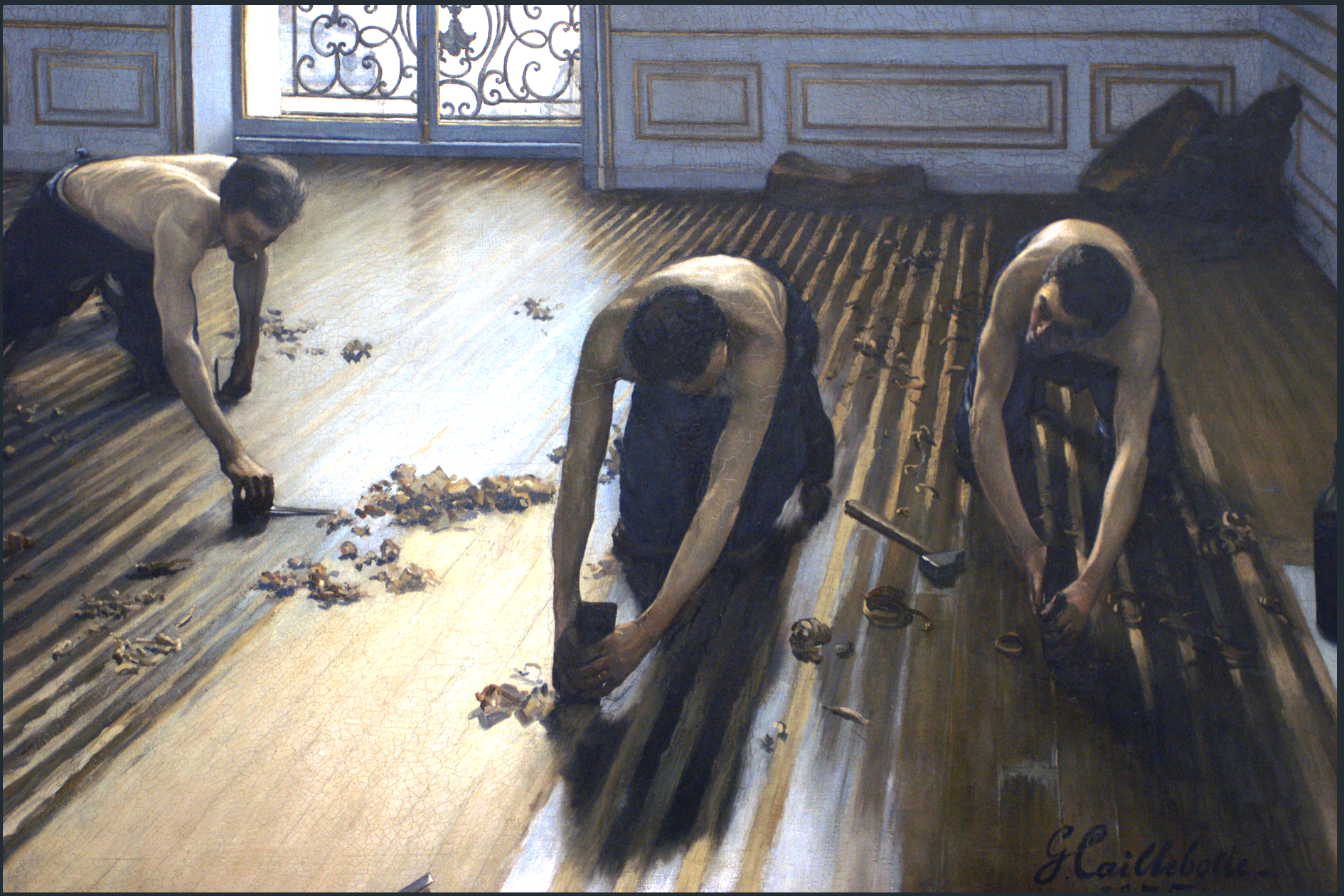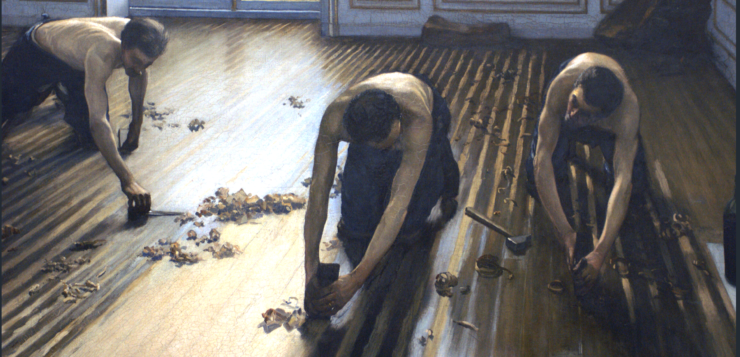PAINTER GUSTAVE CAILLEBOTTE remains the dark horse among French Impressionists, even as his contributions are increasingly being recognized by art critics and the general public. In addition to the critical attention he’s received, a quick Internet search turns up Caillebotte’s artwork reproduced on a wide variety of objects: jigsaw puzzles, coffee mugs, refrigerator magnets, books, prints, posters, shower curtains, socks, neckties, pajamas, T-shirts, backpacks, canvas totes, umbrellas, baseball caps, pillows, acrylic blocks, light switch covers, golf head covers, ceramic ornaments, business cards, throw blankets, mouse pads, wrapping paper, and more.
Commenting 25 years ago on a major traveling exhibition of Caillebotte’s work from the Musée d’Orsay in Paris, I was struck by the lengths to which the authors of the catalog essays went to avoid noticing the obvious: that many of his paintings contain homoerotic imagery that flew in the face of social and artistic norms of 1870s and ’80s France. Since then, a trickle of scholarship has acknowledged that some of his work has a decidedly “queer” aspect, such as Norma Broude’s 2002 essay, “Outing Impressionism: Homosexuality and Homosocial Bonding in the work of Caillebotte and Bazille,” in Gustave Caillebotte and the Fashioning of Identity in Impressionist Paris (Rutgers University Press).
Despite that, I think what I wrote all those years ago still largely applies. Included here are selected works by Caillebotte; you be the judge.
In this essay, I am asking you to follow this procedure when looking at art, specifically that of Gustave Caillebotte—or, in other words, to follow the advice of art historian James Saslow to “trust your eyes: the gay viewer is usually far more open to suggestions of gay emotion than the art ‘experts.’”

In Caillebotte’s first major painting, The Floor-Scrapers, men are depicted laboring in a bourgeois apartment. Kneeling, their arms extended before them, their torsos bare, the men are depicted in remarkably submissive poses. Such a presentation flew in the face of traditional concepts of manhood and its artistic representation, and the canvas was rejected by the jury of the 1875 Paris Salon. Caillebotte’s motivation in refusing to observe the conventions of the time for the depiction of male workers—which would have permitted their depiction as ancient, Arabic, or other “exotic” types—is left unexplored in the catalog essays.
Jim Van Buskirk was the founding Program Manager of the James C. Hormel LGBTQIA Center at the San Francisco Public Library (1992-2007). This essay, including a dozen images, was originally published in 1998 in the now defunct Queer Arts Resource.








Discussion1 Comment
The three-way dynamic in Le Pont de L’Europe becomes even more interesting when you see an earlier, rough version of the painting, in which the female figure strides a bit ahead of the gentleman, essentially blocking his view of the other man; it seems significant that Caillebotte in the final composition moves her back, bringing the two male figures to the fore and into alignment. You can see the both version’s at the painting’s wikimedia commons page: https://en.wikipedia.org/wiki/File:Caillebotte-PontdeL%27Europe-Geneva.jpg